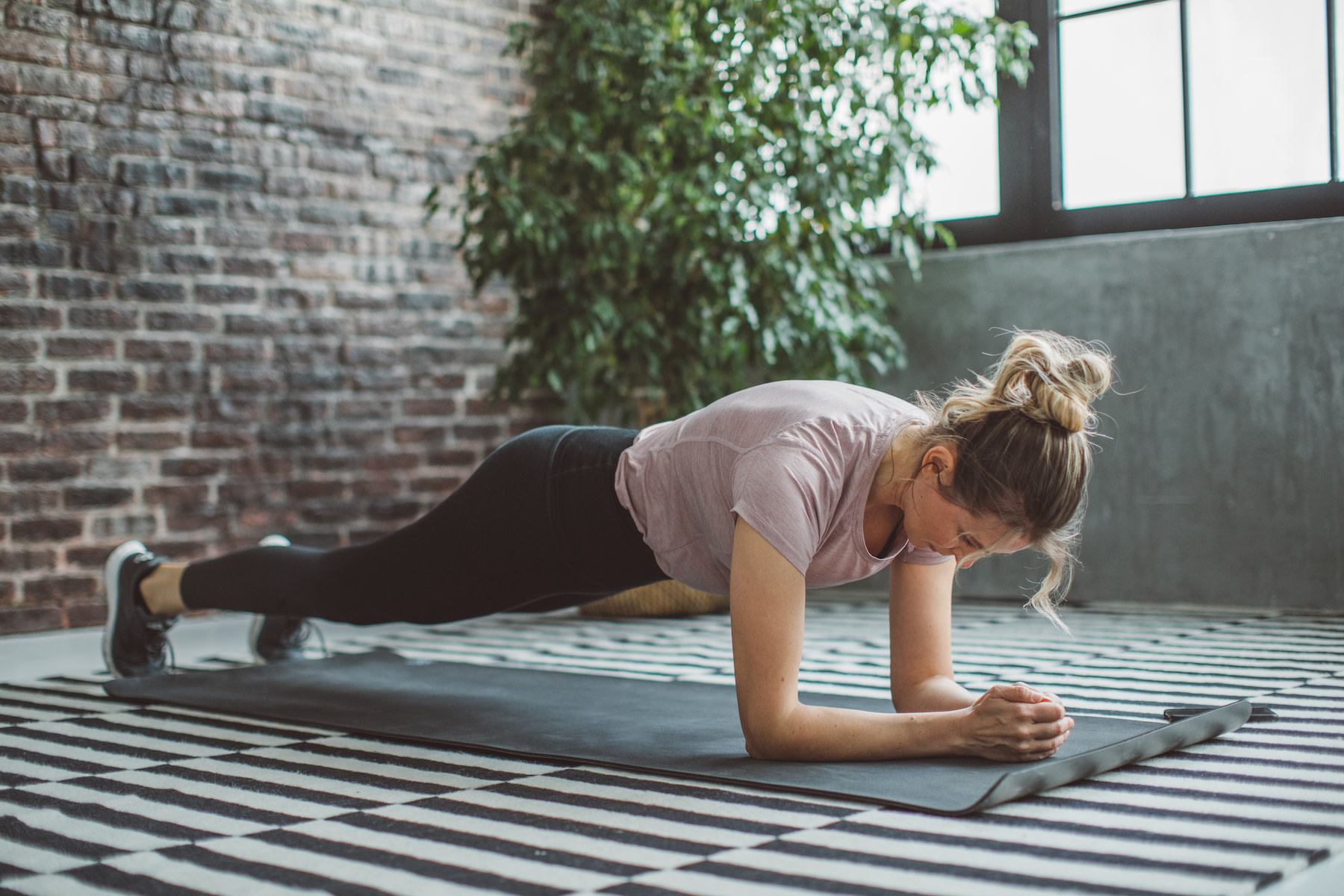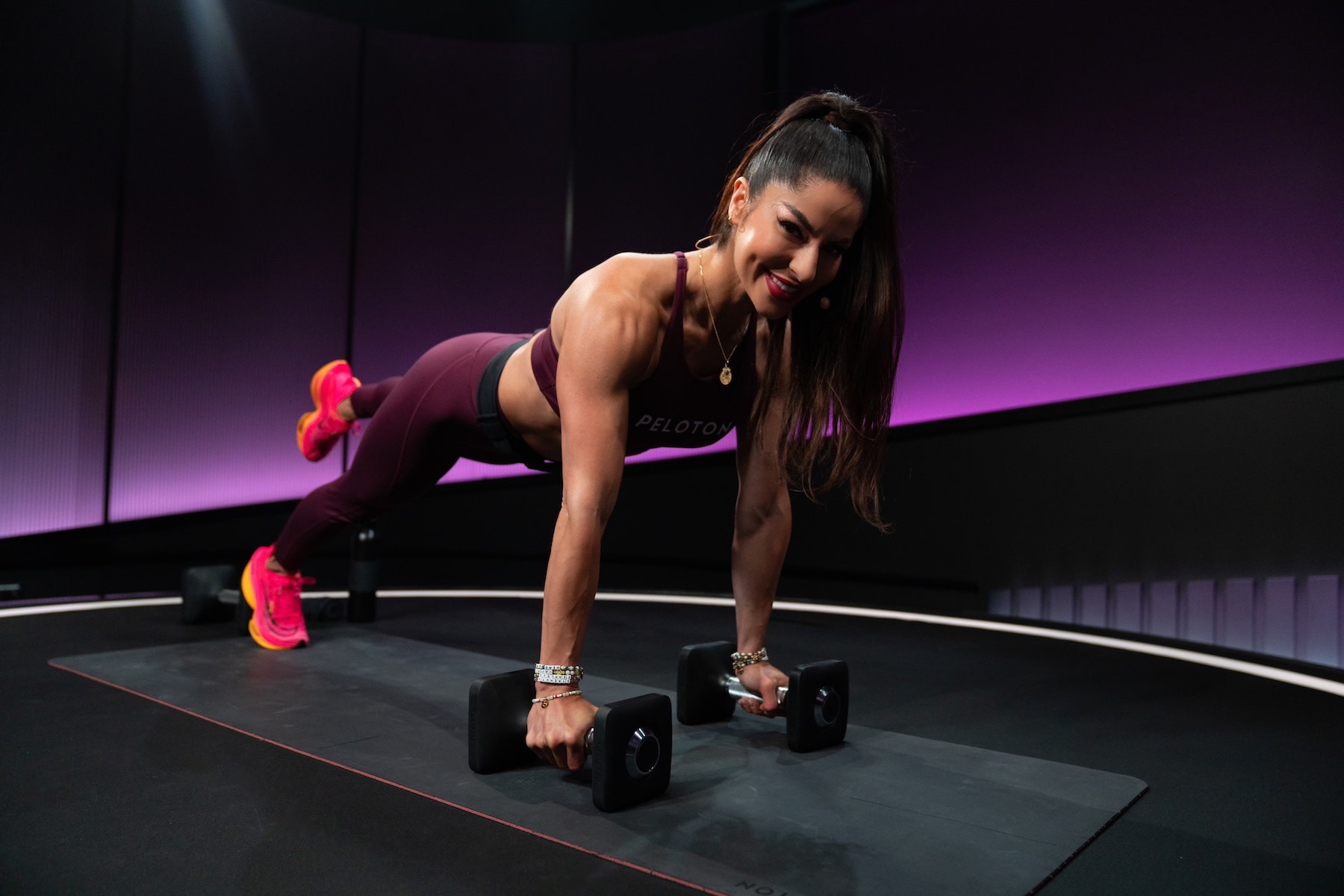
svetikd/E+ via Getty Images
The Case for Doing a 1-Minute Plank Every Day
The power of the plank is real. Here’s how often to do them to reap the biggest benefits.
By Alyssa Sparacino•
How to Do a Plank
Plank Variations
The Benefits of a Plank
Should You Do a Plank Every Day?
How to Work Up to a 1-Minute Plank
How to Make Planking a Habit
You’ve encountered this foundational exercise before. Maybe it was in a HIIT cardio session, a yoga flow, or any number of strength training workouts. Yes, we’re talking about the plank.
“The plank is a fundamental exercise that holds significant importance for overall physical fitness and well-being,” says Peloton instructor Assal Arian. “It’s a versatile and effective exercise that goes beyond just building a strong core.”
This full-body exercise also requires serious mind-body connection. “This concentration enhances overall body awareness,” Assal says. “The full-body engagement contributes to overall strength and endurance.” That translates to your heavy lifts, sprint repeats, and everything in between.
How to Do a Plank
Whether you’ve a complete beginner or consider yourself an expert planker, taking stock of your form will ensure you get the most bang for your buck in this isometric exercise. There’s a big difference between a sloppy plank with poor alignment and a sturdy one with excellent form.

Here’s how to do a proper plank:
Start with palms on the floor directly beneath your shoulders with the insides of your elbows facing forward. Place your toes on the ground with your legs stretched long behind you. Keep your feet together. (To help with balance, you can opt to separate your feet.)
Hold this position. Keep your shoulders away from your ears, neck neutral, pelvis slightly tucked, glutes engaged, legs straight, and weight over the balls of your feet.
Focus on keeping your muscles engaged, particularly your core. Take smooth breaths in and out. Don’t hold your breath.
Note: If you have wrist issues, turn this into a forearm plank by simply lowering down. In this movement, your elbows are under your shoulders, and there’s firm pressure into the floor from your forearms. Maintain engagement throughout the rest of your body as previously described.

Assal demonstrates a plank variation.
Plank Variations
There are seemingly endless variations of this classic exercise. Here are a few of Assal’s favorites:
Knee Plank (or Modified Plank)
If you’re working on your core strength, try dropping your knees to the ground. The body positioning is exactly the same as the standard plank exercise, but the addition of your knees on the floor allows you to have more control.
Side Plank
The side plank is perfect for targeting your obliques or the sides of your core. To do this plank variation, turn to one side so you’re balancing on your forearm with your feet stacked on top of each other. If you’re more advanced, you can place your palm on the ground instead of your forearm. Your hips should be lifted, and your body should be in a straight line. Modify this variation by dropping your bottom knee to the ground.
Elevated Plank
If you’re new to strength training, you’ll love the elevated plank. This variation puts less pressure on your core, shoulders, and wrists. Place your hands on an elevated surface, such as a countertop or the armrest of a couch, and hold the same strong plank position.
The Benefits of a Plank
The key advantages to making this exercise a part of your regular routine, according to Assal, include:
Improved core strength: At its, well, core, the plank is a powerful exercise to improve and maintain core strength as you age.
Better balance and stability: Unless your instructor asks you to do a hip dip while planking, you want to remain steady and stable in this anti-rotation exercise. Remaining still helps improve your stability over time.
Overall coordination: The plank is an isometric movement that asks you to hold still for an extended period of time. As a result, it trains your body awareness and improves coordination both in and out of your workouts.
Injury prevention: With better stability comes a reduced risk of falls. A strong core ensures your lower back is well-supported during those heavy lifting sessions.
Greater functional fitness: Core strength and anti-rotational stability are essential for everyday movements, such as picking up your overflowing grocery bags or buckling a seatbelt.
Full-body engagement: The traditional plank hits all of your core muscles, particularly the transverse abdominis in your deep core, but it also engages your shoulders, back, glutes, and quads, Assal says.
Metabolic boost: While planking, you engage multiple muscle groups at once, including some larger lower body groups, such as your glutes, effectively expending your energy and output.
Improved posture: A strong core keeps you upright, so the classic plank is a great way to improve your posture, particularly if you spend a lot of time sitting throughout the day.
Related Articles
Should You Do a Plank Every Day?
“While a one-minute plank daily can be beneficial, balance is key,” Assal says. “Avoid overtraining and allow for adequate rest.” More is not necessarily better when it comes to how long you hold a plank. Focus on the quality of your form, rather than the seconds on the clock. Still, experts generally agree that if you’re looking to challenge your planking game, a 60-second hold is a great goal to work toward.
How to Work Up to a 1-Minute Plank
No matter where you’re starting from, Assal suggests aiming for incremental adjustments. “Gradually increase the plank duration, adding 10 to 15 seconds each week,” she says. If you consider yourself a more advanced gym-goer, integrate progressive plank variations and other core-strengthening exercises to help perfect your form, she adds.
How to Make Planking a Habit
“Integrating planks into a regular exercise routine can yield long-term positive effects on overall physical health and well-being,” Assal says. Aligning your goals with a realistic schedule will help you stay consistent.
Consider what the best time during your day may be to fit in a quick plank, Assal says. Maybe it’s a 30- or 60-second break between meetings or perhaps it may make more sense to integrate it into your other workouts. Regardless of what you choose, start slow. “Begin with a shorter duration and progressively increase,” she says.
Track your planks to see how you’re progressing over time. Grab a notepad and jot down how long you held your plank on a given day, then refer back at the end of each week. But don’t keep it too serious. “It’s essential to listen to your body and adjust accordingly,” Assal says. Ultimately, it’s not about how long you can hold a plank for. It’s about being kind to your body.
This content is for informational and educational purposes only and does not constitute individualized advice. It is not intended to replace professional medical evaluation, diagnosis, or treatment. Seek the advice of your physician for questions you may have regarding your health or a medical condition. If you are having a medical emergency, call your physician or 911 immediately.
Level up your inbox.
Subscribe for a weekly dose of fitness, plus the latest promos, launches, and events.
By providing your email address, you agree to receive marketing communications from Peloton.
For more about how we use your information, see our Privacy Policy.






